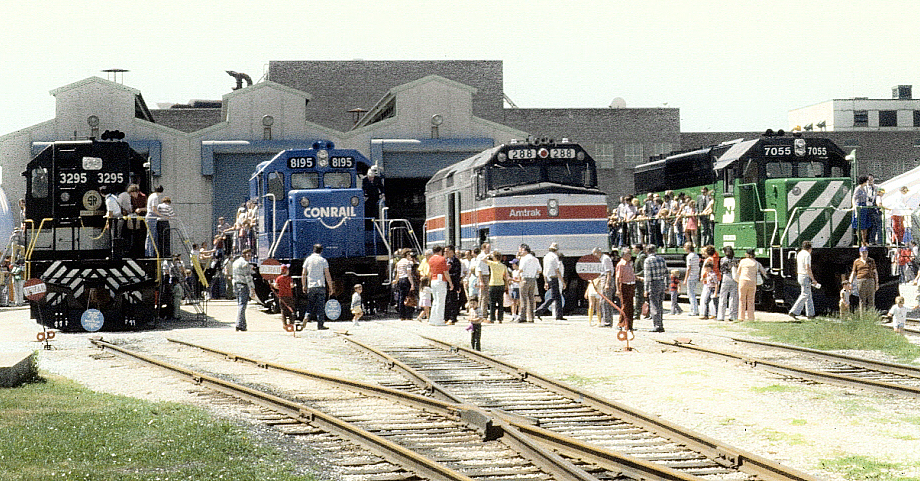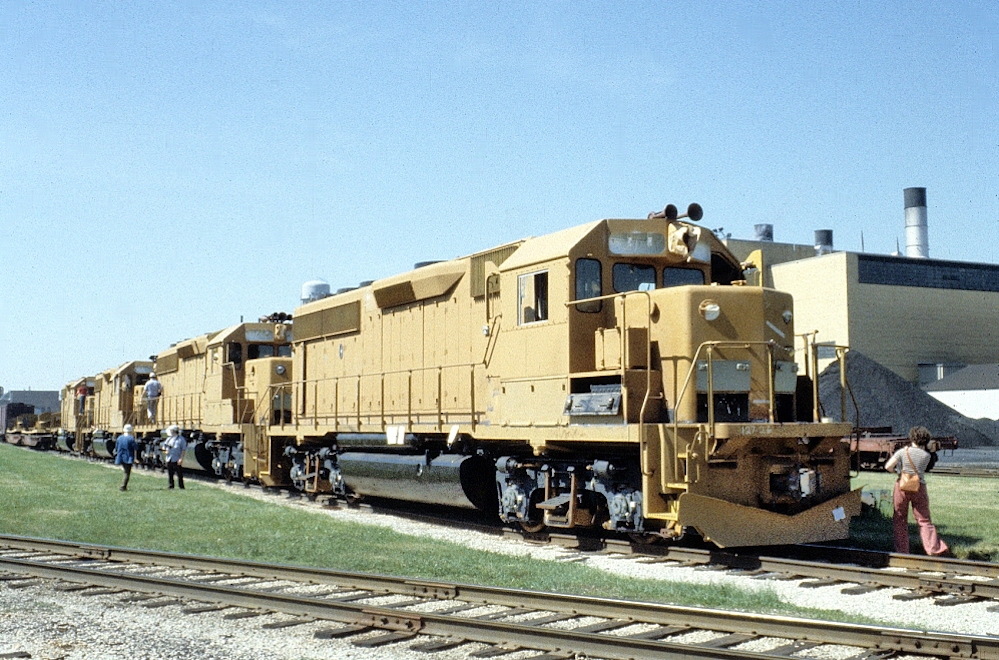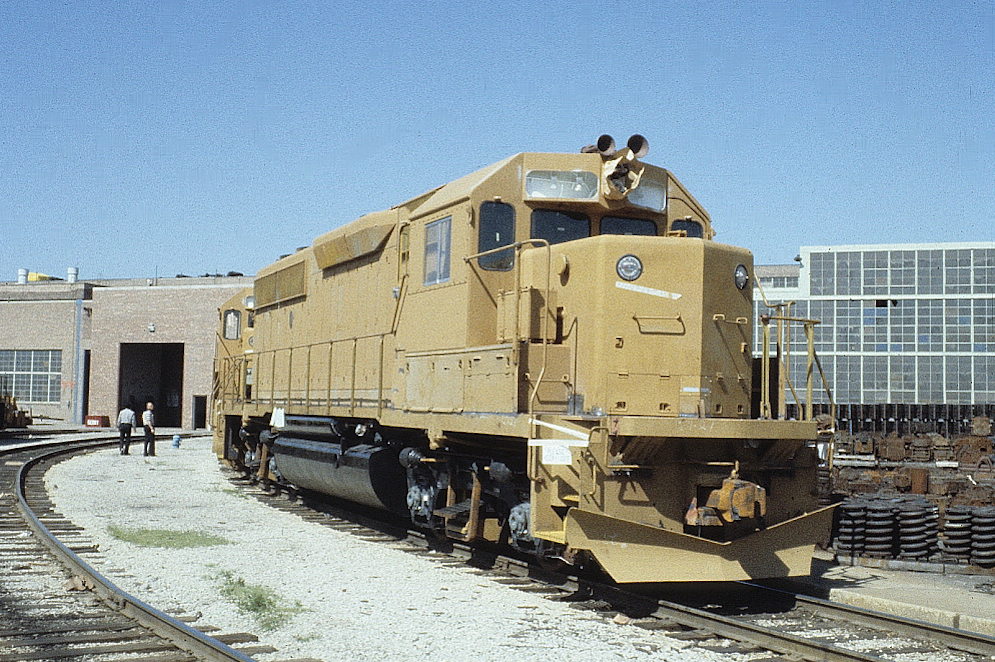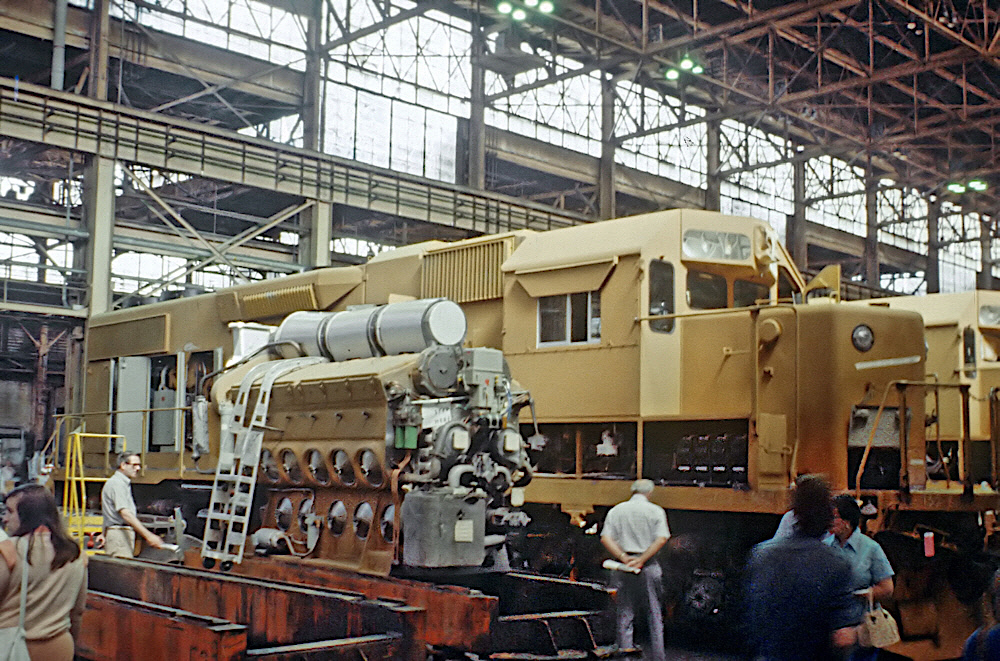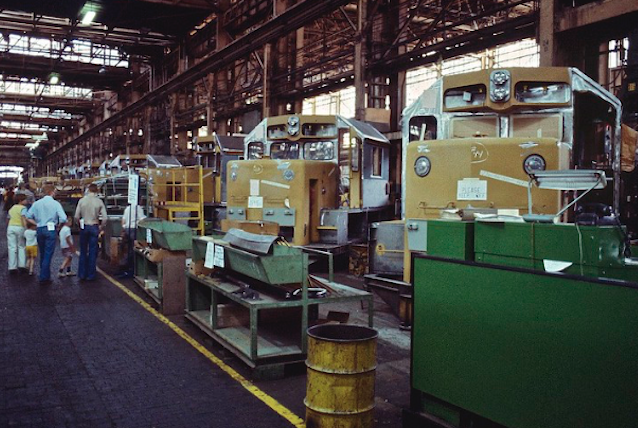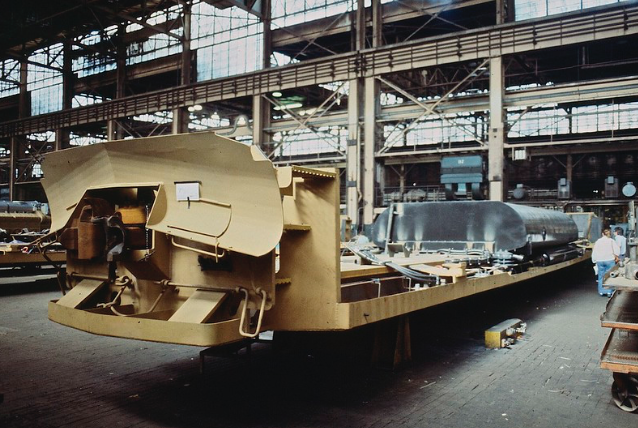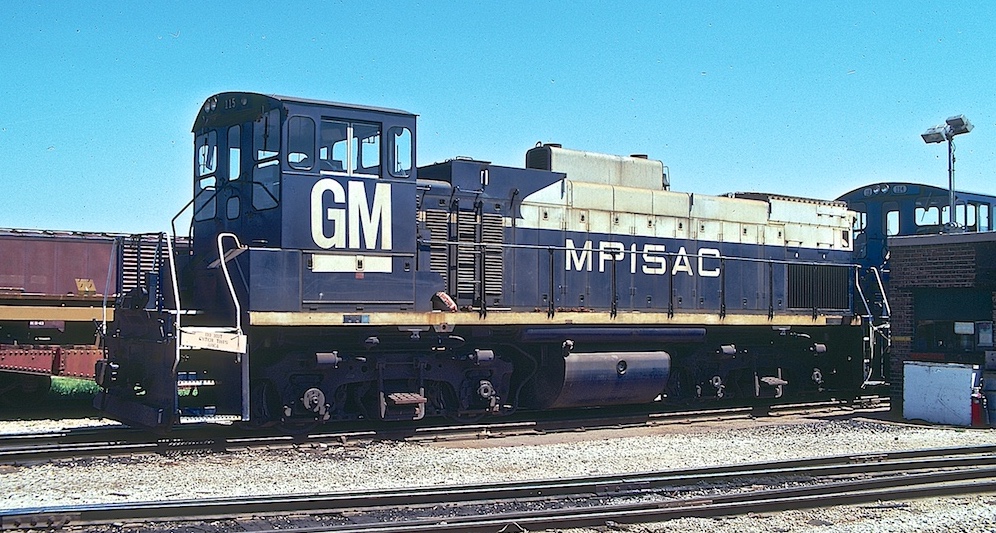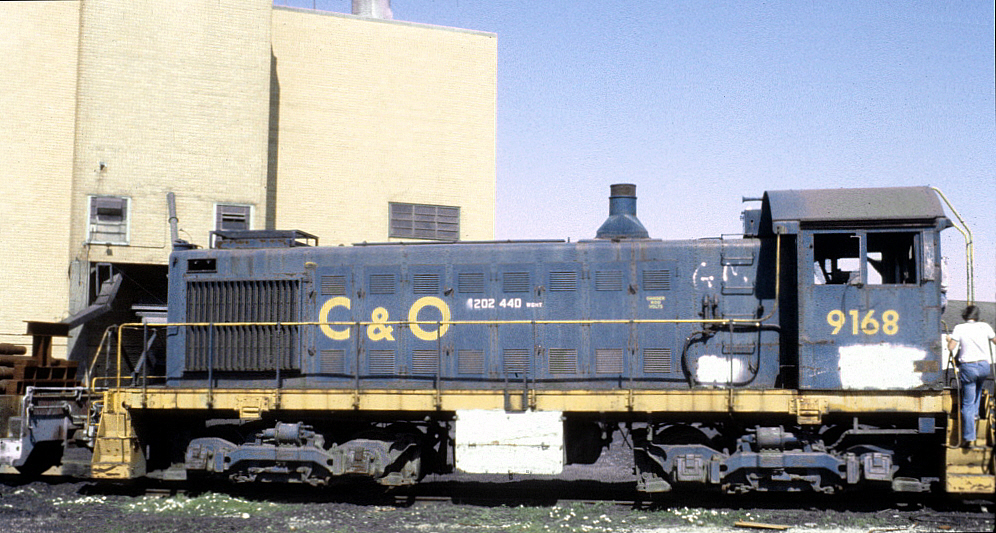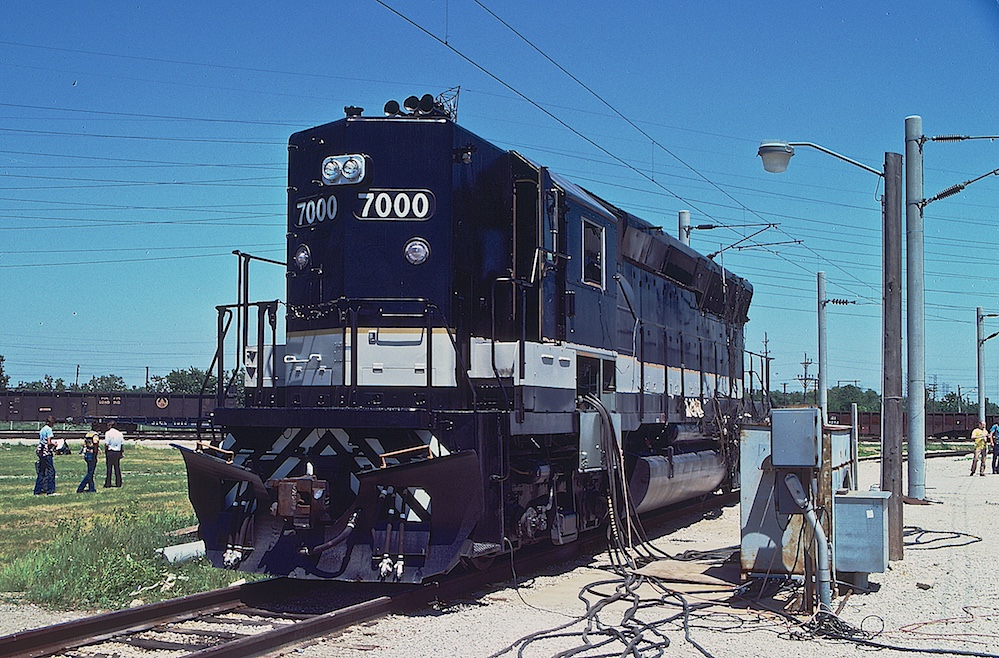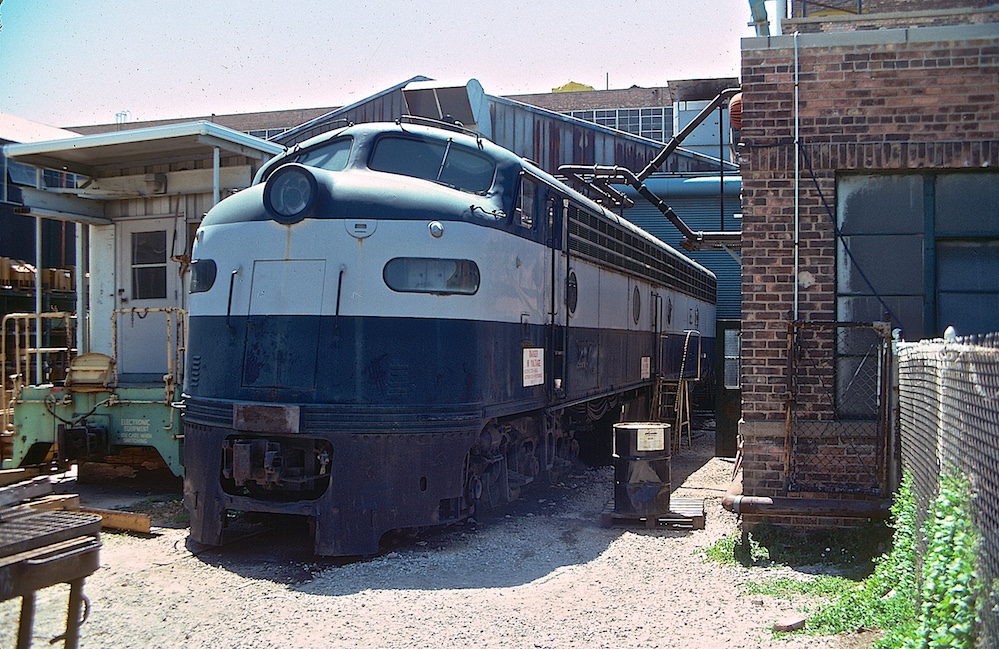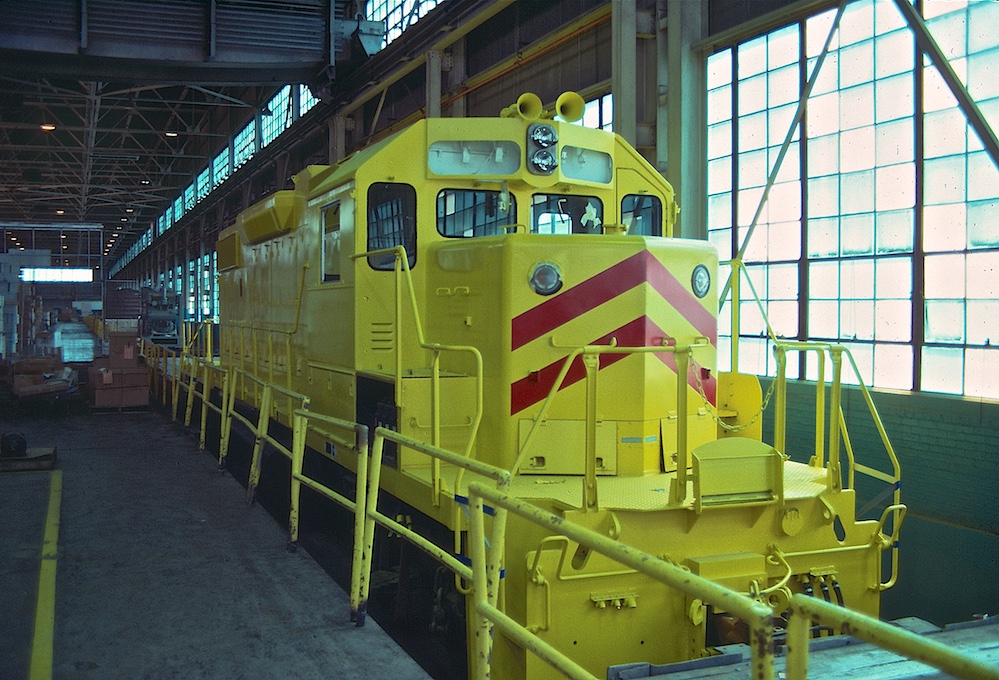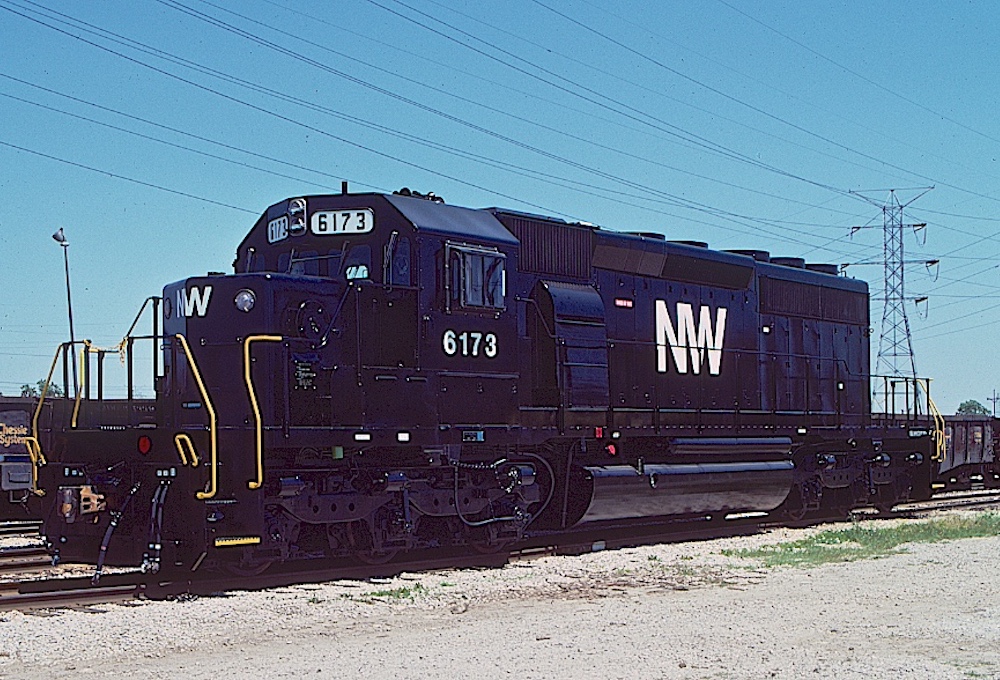1989 - 50th Anniversary of the F-unit |
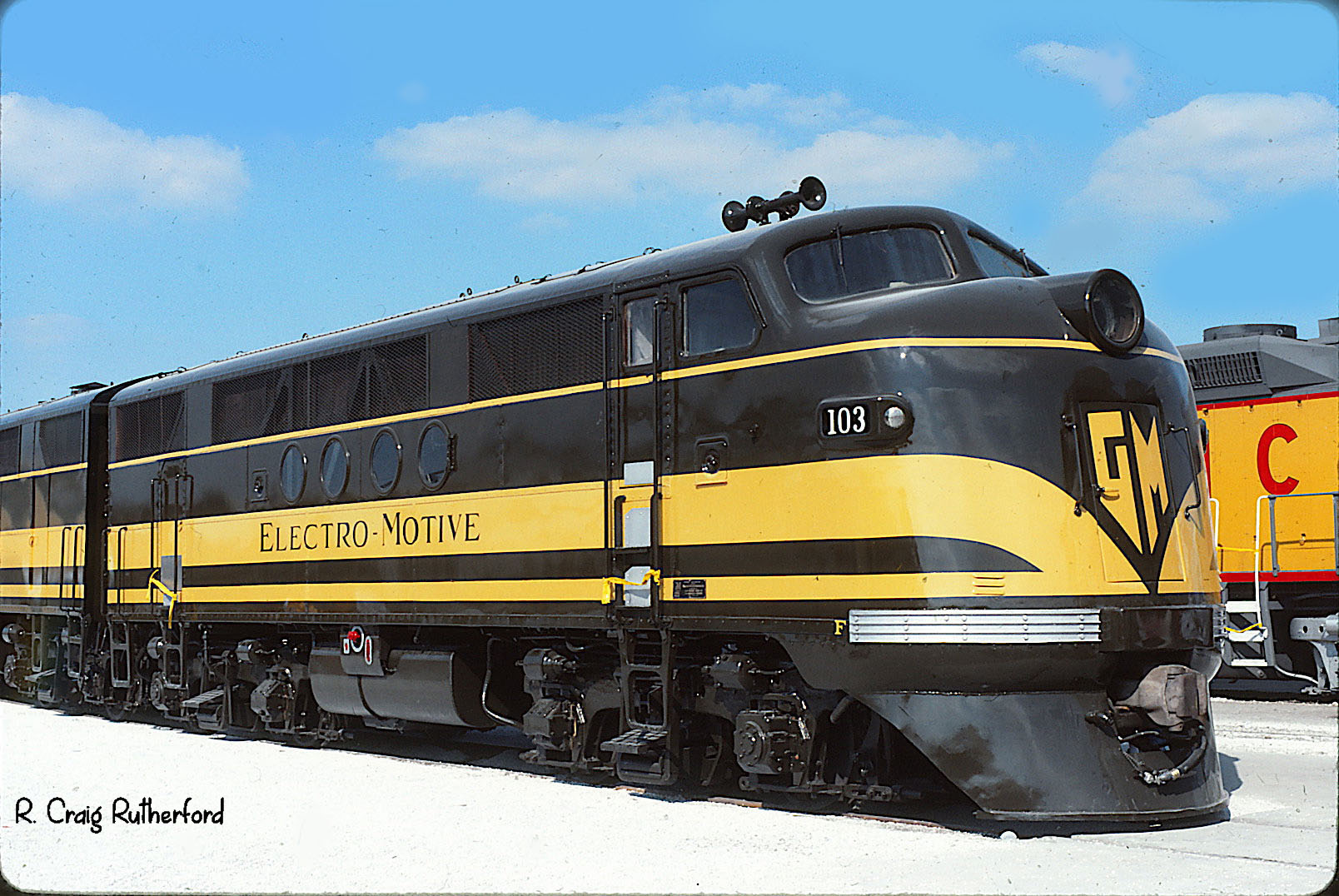
Star of day-long program was Electro-Motive Division's FTA and FTB #103 -- The locomotive
had revolutionized railroading like none other. Built in 1939 by EMD predecessor Electro-
motive Corporation, the historic cab-unit stood gleaming in its original colors for the faithful.
The FTA had also been present at the 50th Anniversary, but wore Southern Railway dress
and carried #6100. (R. Craig photo)
| 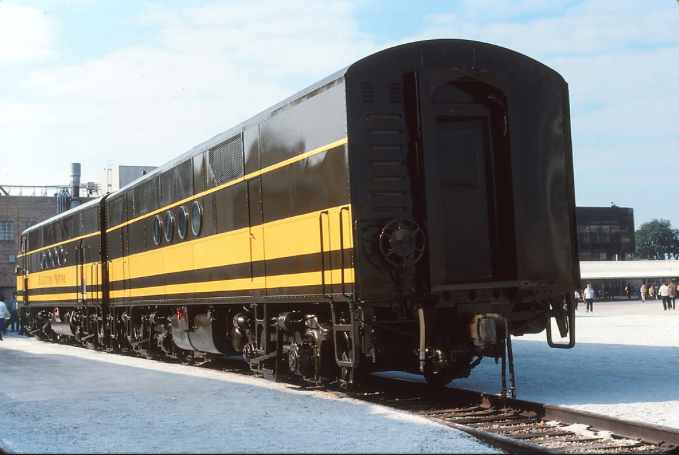
The 1989 Open House marked the first time in perhaps 30 years that the FTA/B #103 duo had
been re-united. The FTB had been owned by the Virginia Museum Of Transportation in Roanoke;
and the FTA was the property of the National Museum of Transportation in St. Louis. Both of
the 1939-vintage locos were cosmetically restored to their original as-built appearance. (R.
Craig photo)
|
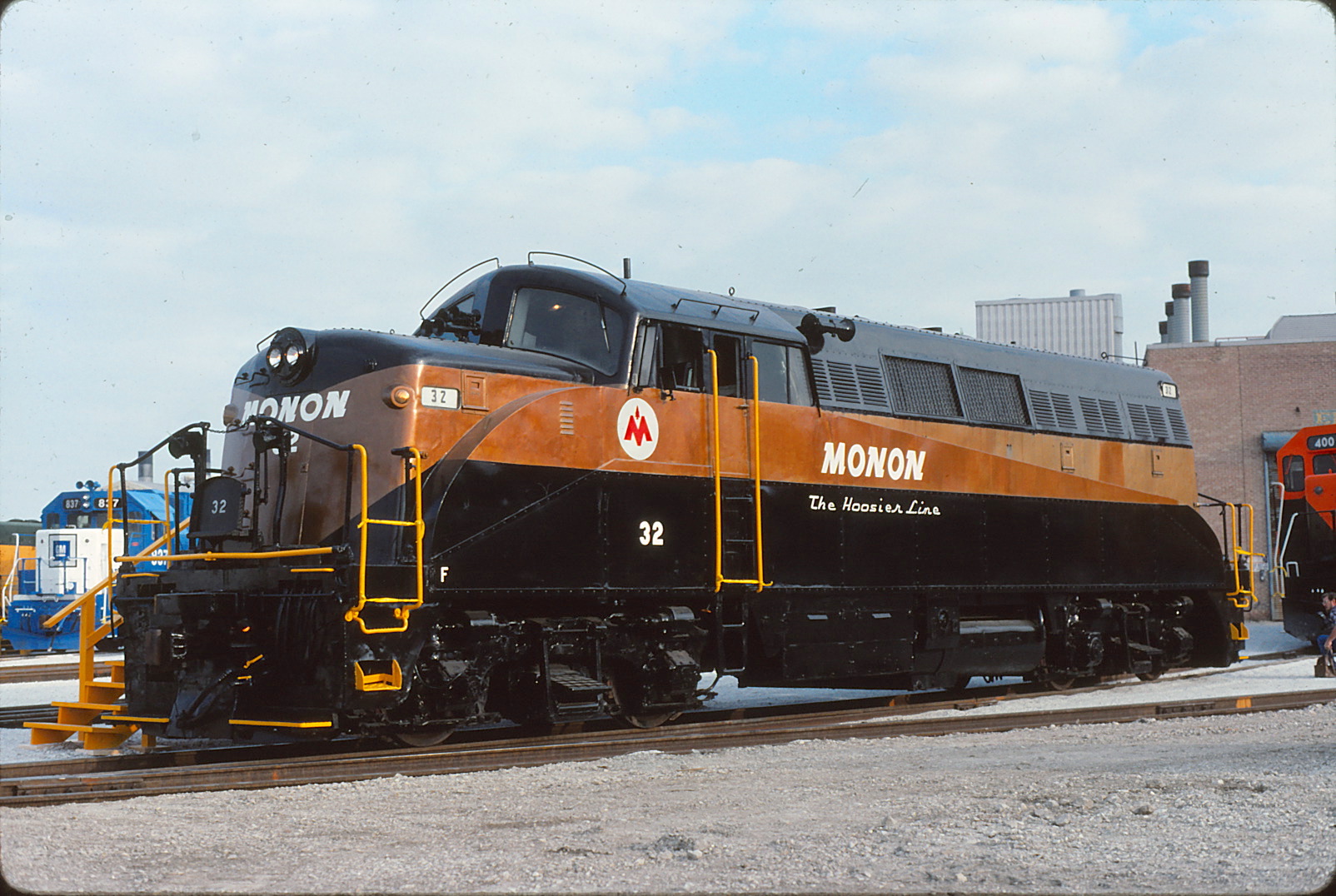
Chicago Indianpolis & Louisville's (Monon) fleet of nine BL2s were built in April 1948 and
pre-dated the GP7 model by sixteen months. Besides their birthplace at EMD, the two four-axle
road-switchers shared one other thing in common -- the 1500-hp V16-567B diesel engine. Monon
#32 was one of 58 BL2s built, and only one of four known to still be operational; the 34-year
veteran is still active at the kentucky Railway Museum. (R. Craig photo)
| 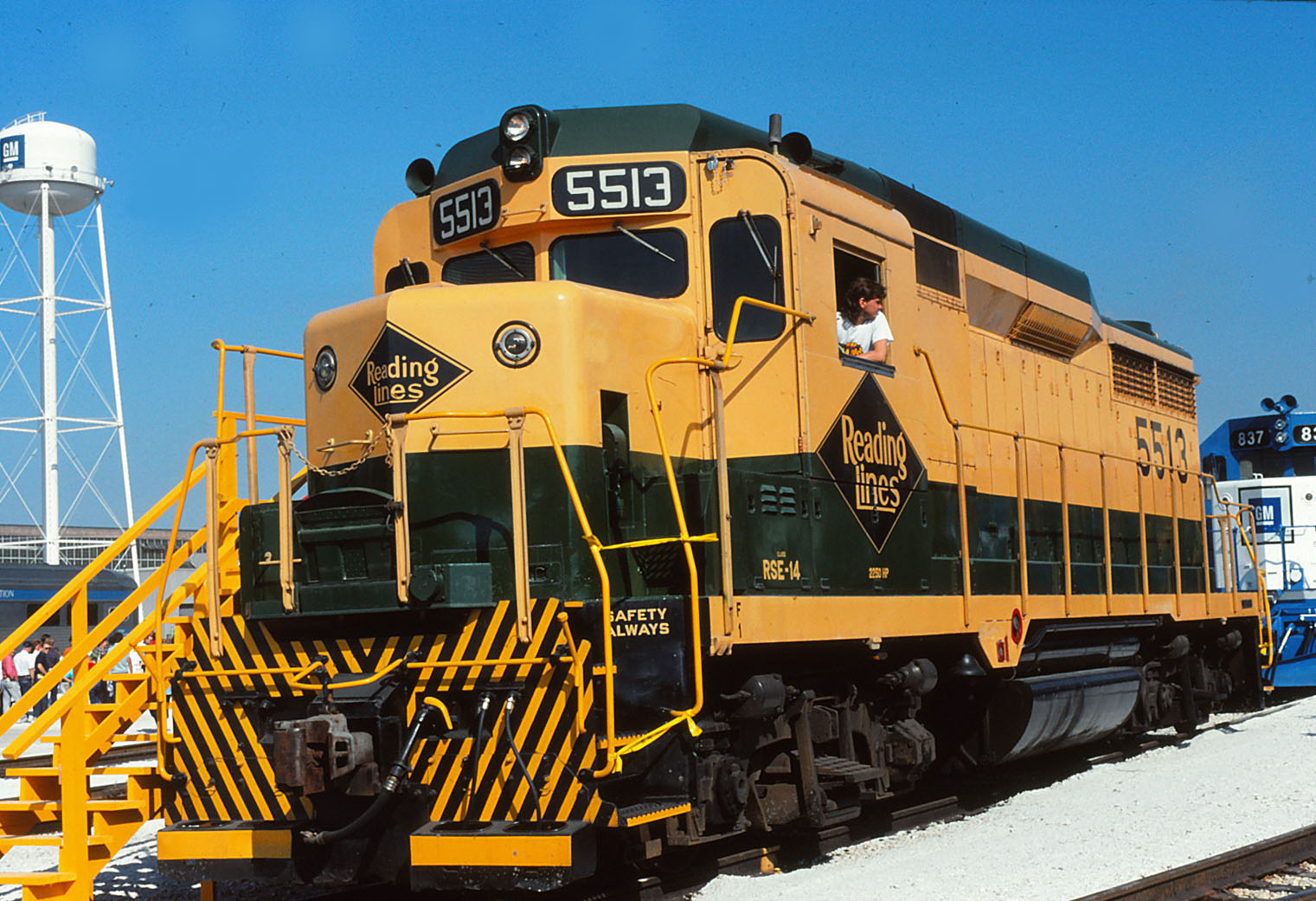
On loan from the Reading Company Technical & Historical Society, GP30 #5513 had been part of
an order for 20 new EMD-built locomotives. It was among the first to wear the railroad's new
imitation gold and green corporate atire. In 1976, it became part of Conrail as #2181, but
never lost its original paint scheme. Total production of the GP30 model reached 946 units
with most being placed in high-speed freight service. (R. Craig photo) |
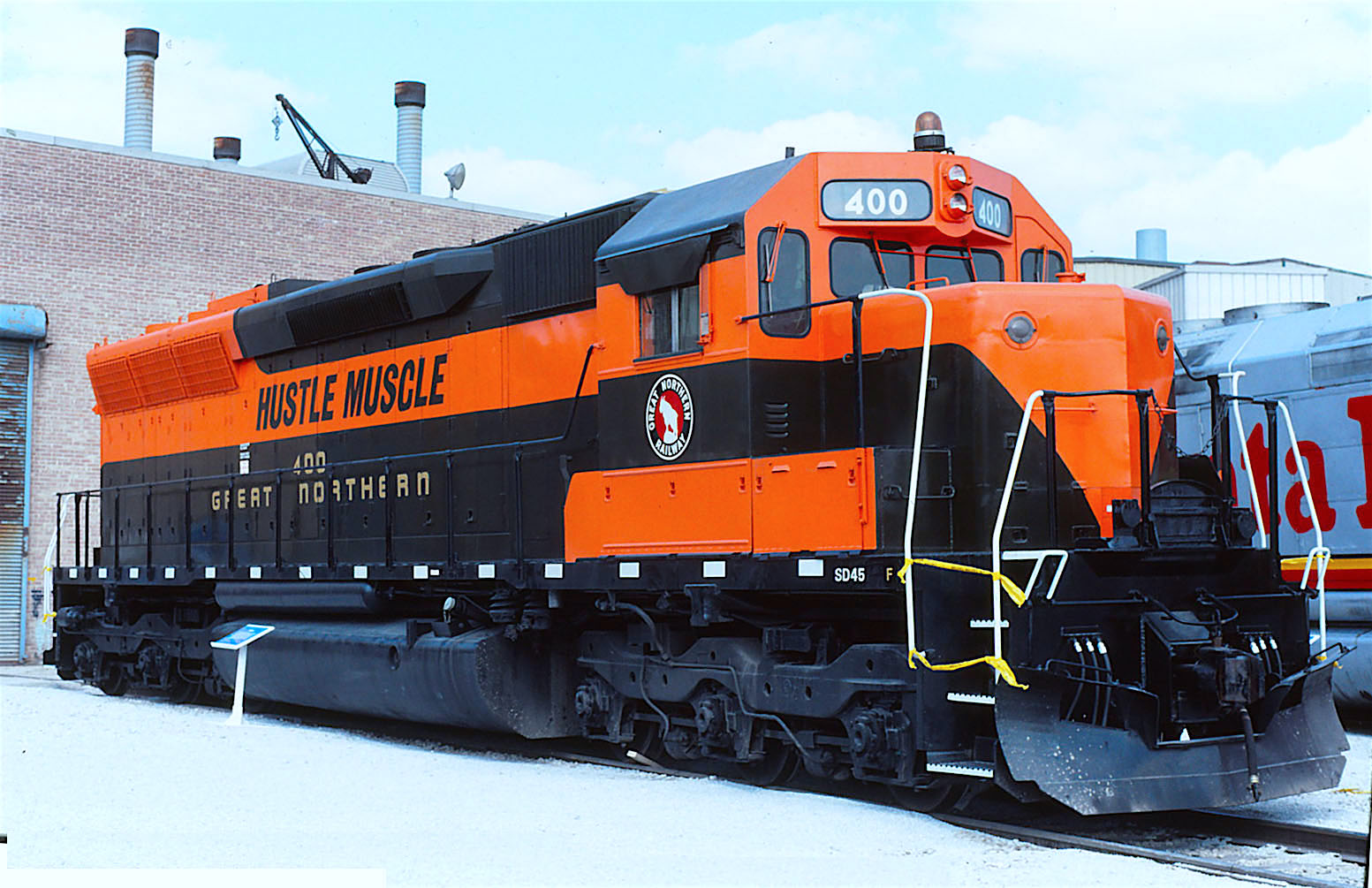
The Great Northern Historical Society was one of several railroad museums and technical
organizations participated in the EMD celebration. GN SD45 #400dubbed "Hustle Muscle," was
the Society's representative. The 3600-hp locomotive was the first production model of the
popular six-axle freighter. (R. Craig photo)
|

"War Bonnet"-attired Atcheson Topeka & Santa Fe FP45 #101 (2nd) drew its share and more of
photographers and admirers. A kodachrome sky made the six-axle passenger hauler sparkle and
gleam as only ATSF's red/silver/yellow could. The locomotive was re-numbered #92 and donated
to the Illinois Railway Museum. (R. Craig photo)
|
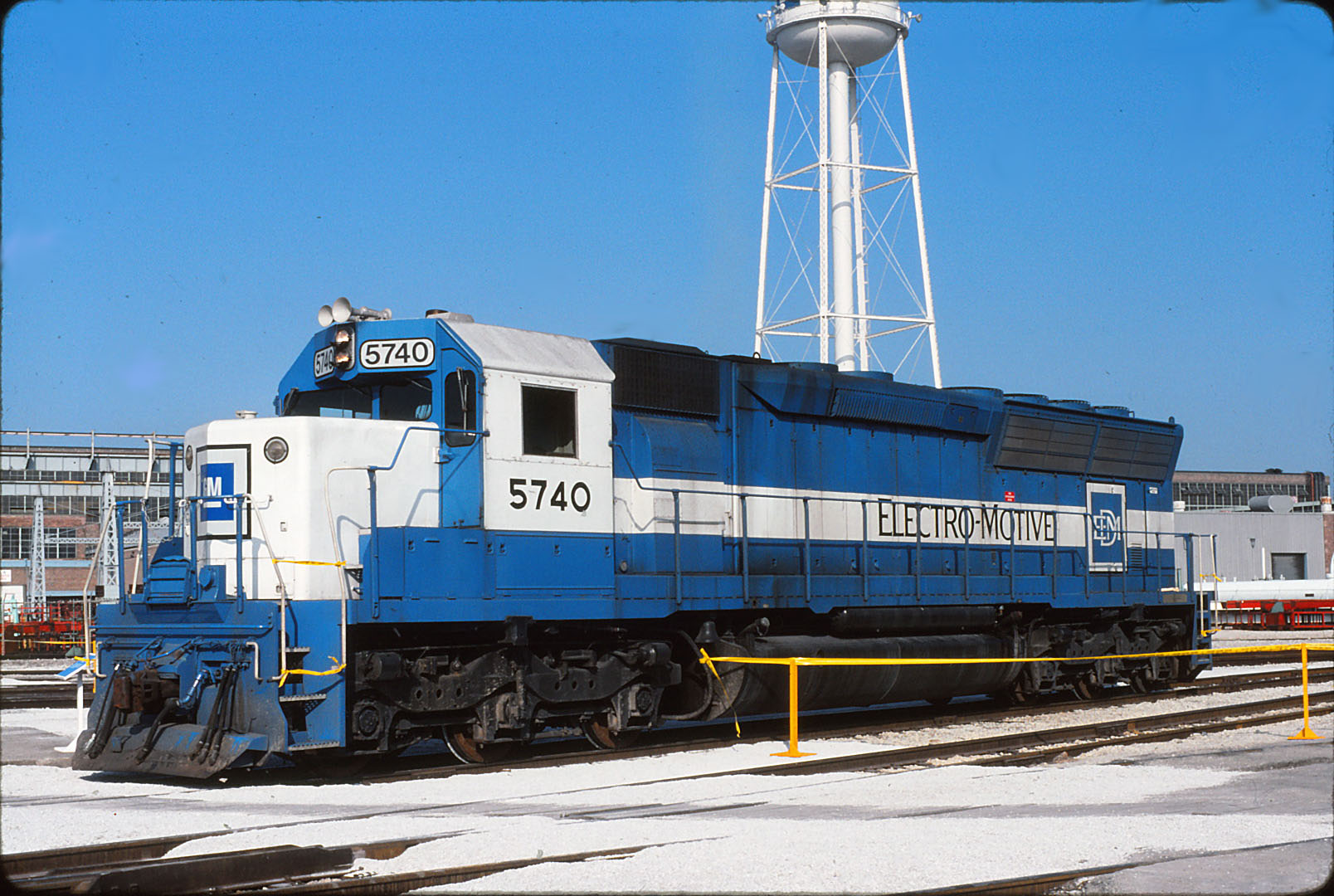
The 1960s and 1970s might be viewed as the high-water mark for locomotive manufacturer's
deployment of new model demonstrators. Alco, EMD, GE and Montreal locomotive Works all had
new models that the builders were anxious to showcase on North American railways. EMD
dispatched scores of demonstrators during the two-decades, including SD45X #5740. The 4200-hp
loco was built in June 1970. (R. Craig photo)
| 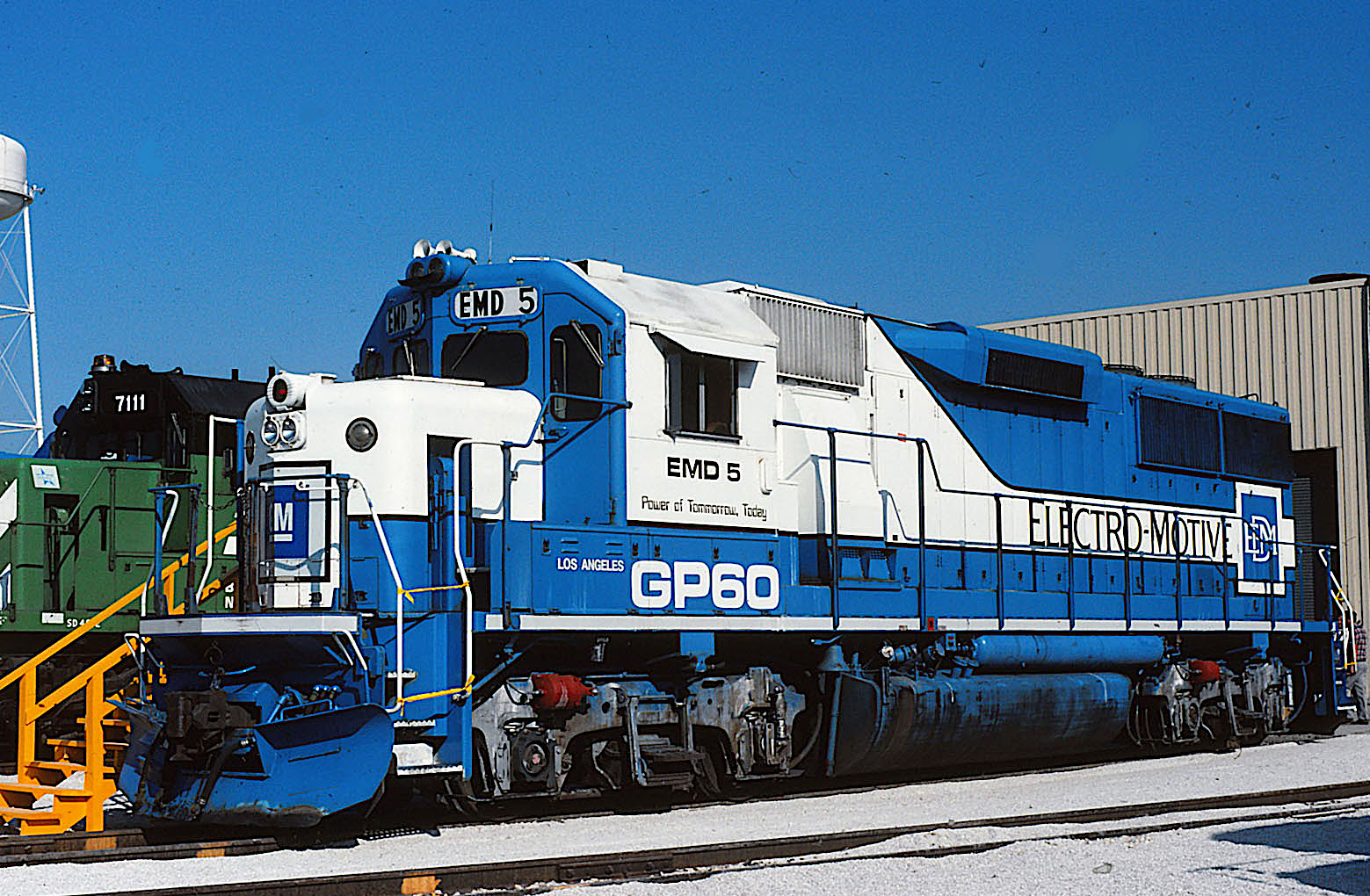
EMDs GP60 Demonstrators #5, 6 & 7 were the first to feature micro-processor controls. The
new third-generation model was delivered in three variations: Standard cab GP60 (294 built),
cab-less GP60B (23-built) and safety cab GP60M (63 built). The three demonstrators were sold
to CSX and became 6897, 6898 & 6899 respectively. (R. Craig photo)
|
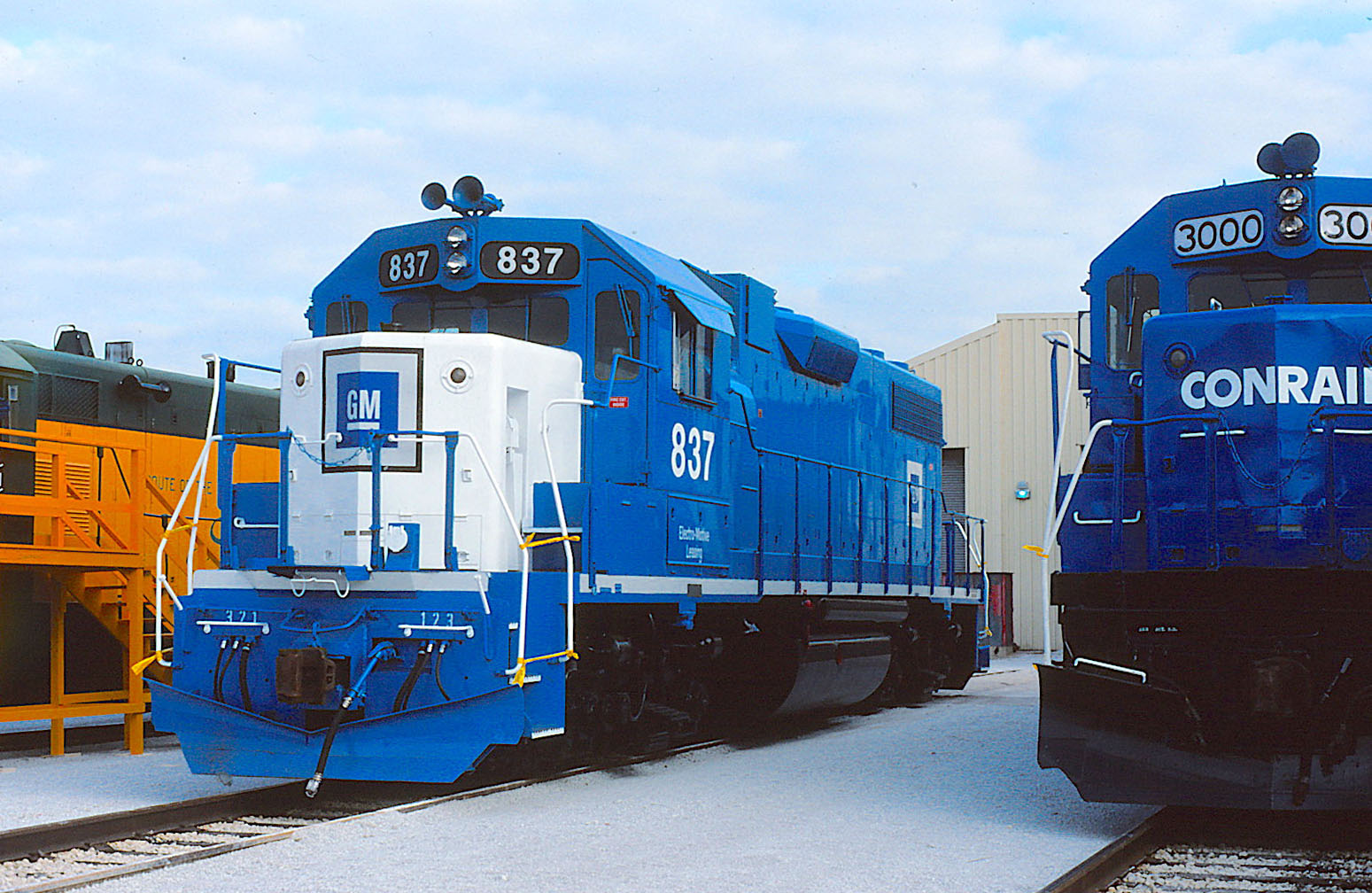
EML GP38-2 #837 was originally built for Penn Central as #8037 in 1972; it went to Conrail
years later still wearing #8037. In 1987, it became the property of EMLX (the leasing arm
of GM in the late 1980s. From there, the four-axle road-switcher went to UP in 1998 as #1968/
468. It also spent time as an LLPX lease unit, prior to joining the lease fleet at GMTX.
(R. Craig photo)
| 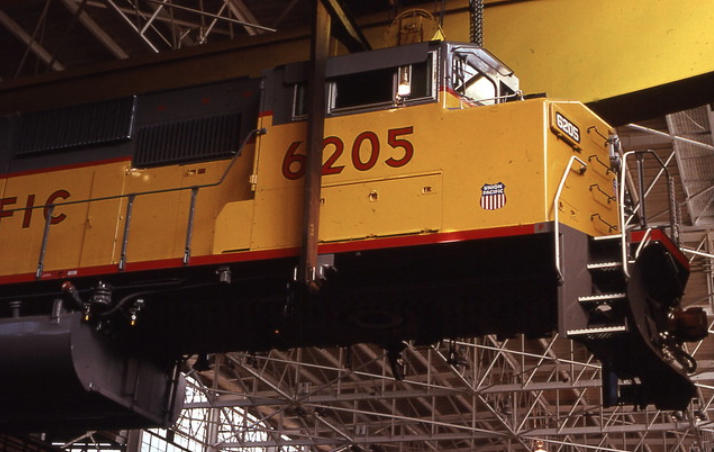
Through-out 1989 and 1990, the erection bays at the LaGraange plant were filled with SD60Ms,
while EMD worked to complete Union Pacific's first order for the new 3800-hp road-switcher
(#6085-6268). While the #6200 was outside basking in the sun, the shell of sister #6205 was
inside the assembly hall being raised and lowered for visitors by a 200-ton capacity crane.
(David Wilson photo)
|
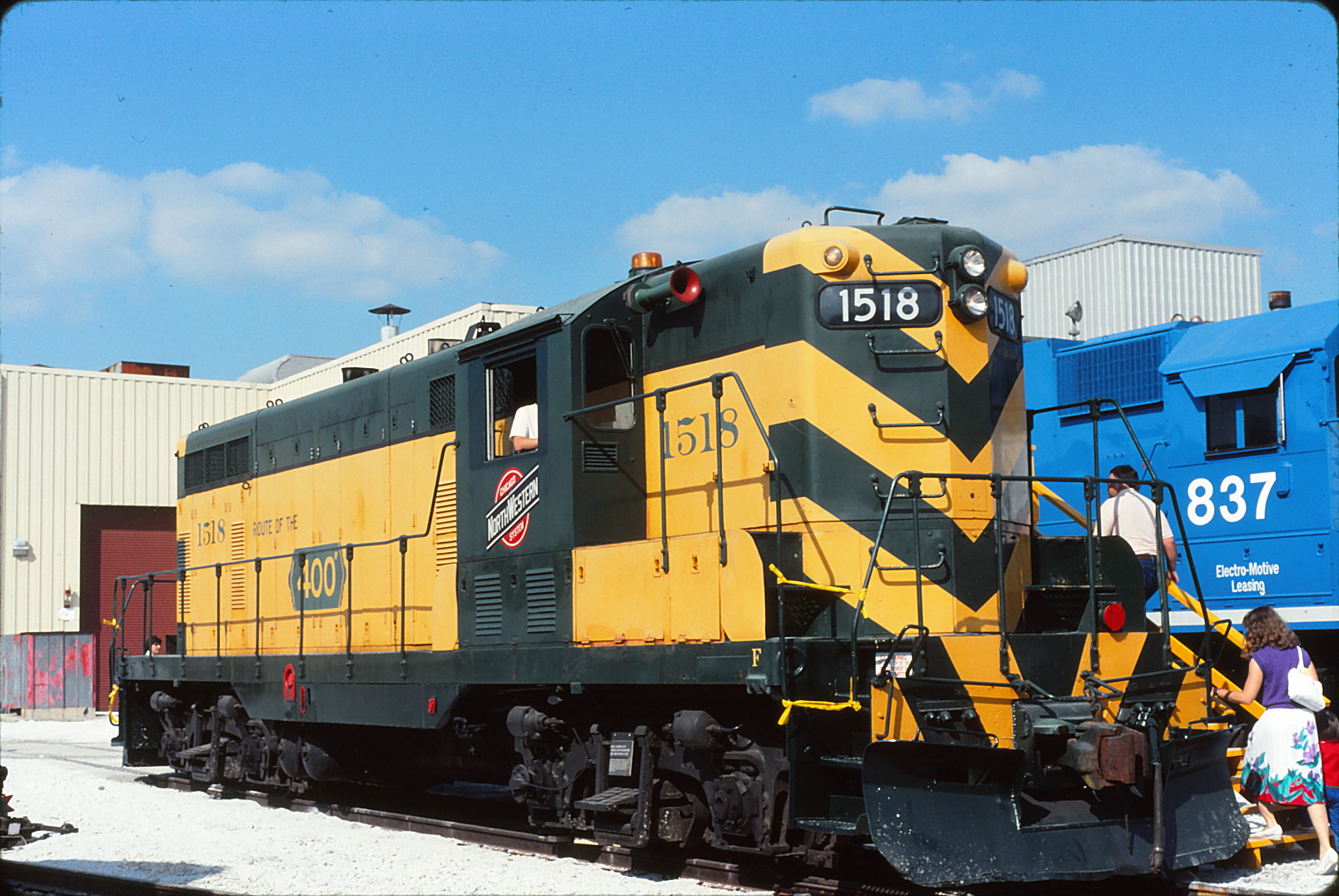
Chicago & North Western #1518 was the first GP7 built and ex-EMD Demonstrator #100; it also
has the dubious distinction of being the only locomotive to appear at multiple open houses,
wearing the colors of its original owner.(R. Craig photo)
| 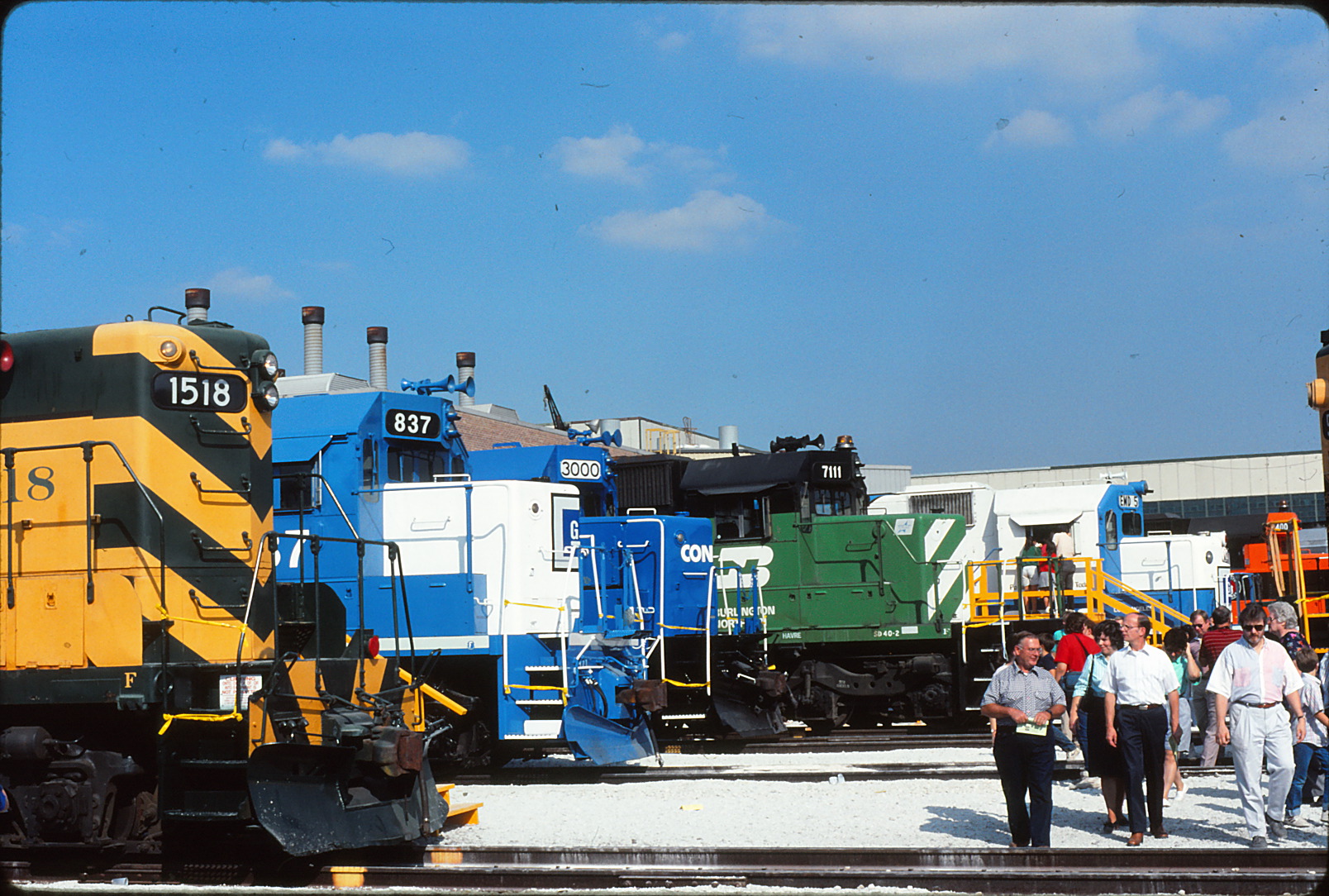
The winners by a nose -- well, not exactly. In terms of sales, all of the locomotive models
pictured were well embraced by the railroad industry, except the GP60. From left to right,
the models are GP7, GP38, GP40, SD40, GP60 and SD45. (R. Craig photo)
|
